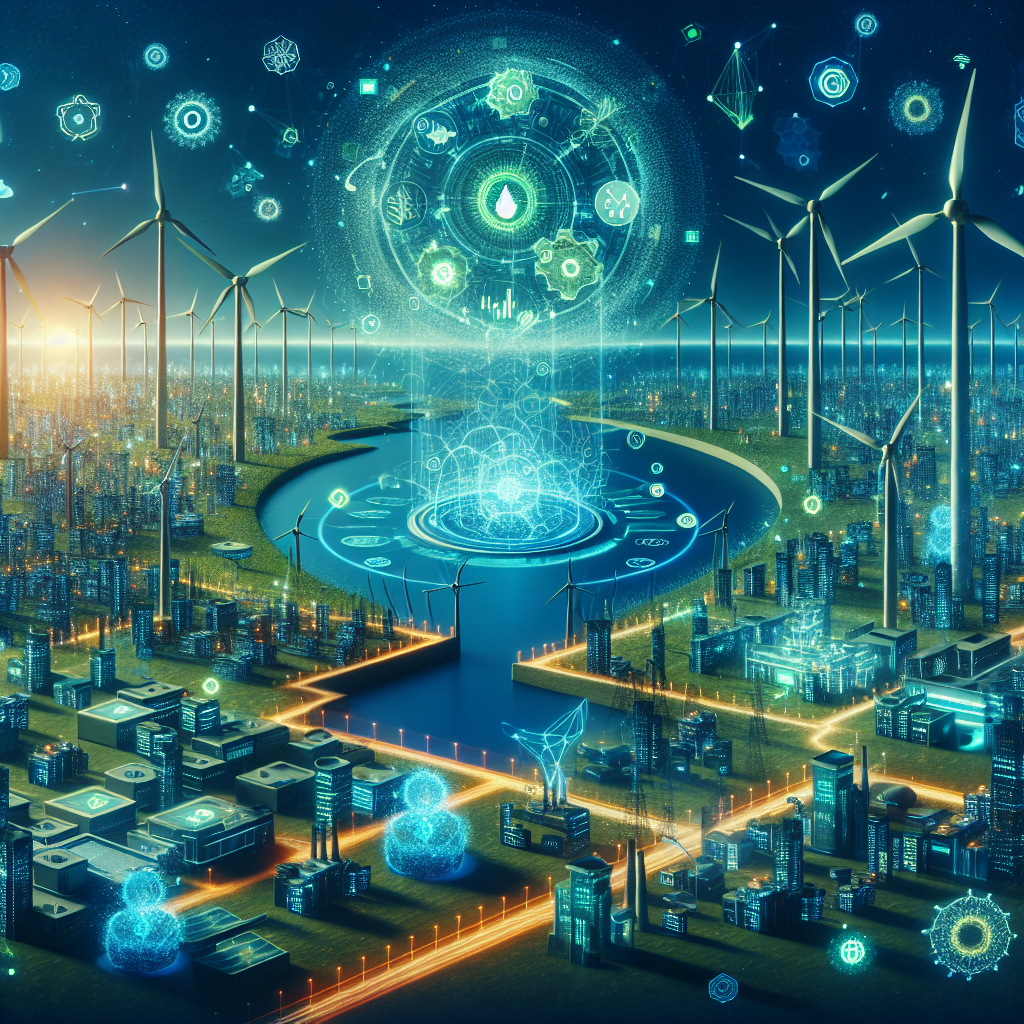In recent years, there has been a growing interest in renewable energy sources as a sustainable alternative to traditional fossil fuels. Wind and solar power, in particular, have become increasingly popular due to their environmental benefits and declining costs. However, one of the biggest challenges facing the widespread adoption of renewable energy is its intermittent nature. Unlike traditional power sources, such as coal or natural gas, wind and solar power generation can fluctuate based on weather conditions.
To address this issue, researchers and engineers have been developing innovative forecasting techniques to better predict renewable energy generation. One of the most promising technologies being used is artificial intelligence (AI), which has the potential to revolutionize the way we forecast renewable energy production. In this article, we will explore some of the latest innovations in renewable energy forecasting using AI and discuss how these advancements are helping to integrate more renewable energy into the grid.
1. AI-Powered Weather Forecasting
One of the key factors influencing renewable energy generation is weather conditions. Wind and solar power production can be significantly impacted by factors such as wind speed, cloud cover, and temperature. Traditional weather forecasting models often struggle to accurately predict these variables, leading to unreliable renewable energy forecasts.
AI-powered weather forecasting models, on the other hand, are able to analyze vast amounts of data in real-time to make more accurate predictions. Machine learning algorithms can process information from a variety of sources, including satellite imagery, weather stations, and historical data, to generate more precise weather forecasts. By incorporating AI into weather forecasting, researchers are able to improve the accuracy of renewable energy forecasts and better anticipate fluctuations in power generation.
2. Predictive Maintenance
In addition to weather forecasting, AI is also being used to predict maintenance needs for renewable energy systems. Wind turbines and solar panels are complex machines that require regular maintenance to ensure optimal performance. By analyzing data from sensors and monitoring equipment, AI algorithms can identify potential issues before they occur and schedule maintenance tasks accordingly.
Predictive maintenance using AI can help reduce downtime and improve the overall efficiency of renewable energy systems. By proactively addressing maintenance needs, operators can maximize the lifespan of their equipment and minimize costly repairs. This technology is particularly valuable for offshore wind farms and remote solar installations, where access to maintenance personnel is limited.
3. Grid Integration
Another area where AI is making a significant impact on renewable energy forecasting is grid integration. As more wind and solar power are added to the electricity grid, operators face the challenge of balancing supply and demand in real-time. Fluctuations in renewable energy generation can lead to grid instability and potential blackouts if not managed properly.
AI-powered forecasting models can help grid operators anticipate changes in renewable energy production and adjust electricity generation accordingly. By analyzing historical data, market trends, and weather forecasts, AI algorithms can optimize the dispatch of power plants and storage systems to ensure a stable and reliable grid. This technology is essential for maximizing the value of renewable energy resources and minimizing the reliance on fossil fuels.
4. Energy Trading
In addition to grid integration, AI is also being used to optimize energy trading in renewable energy markets. With the increasing penetration of wind and solar power, there is a growing need for flexible and dynamic trading strategies to maximize revenue and minimize risk. AI algorithms can analyze market data, pricing trends, and supply-demand dynamics to make informed decisions about energy trading.
By leveraging AI for energy trading, renewable energy producers can improve their market competitiveness and increase their profitability. Machine learning algorithms can identify arbitrage opportunities, optimize bidding strategies, and forecast price fluctuations to maximize revenue generation. This technology is particularly valuable for renewable energy developers looking to increase their market share and expand their business operations.
5. FAQs
Q: How accurate are AI-powered renewable energy forecasts?
A: AI-powered forecasting models have been shown to significantly improve the accuracy of renewable energy forecasts compared to traditional methods. By analyzing vast amounts of data and incorporating real-time information, AI algorithms can make more precise predictions about wind and solar power generation.
Q: What are the benefits of using AI for renewable energy forecasting?
A: Using AI for renewable energy forecasting offers several benefits, including improved accuracy, increased efficiency, and better grid integration. By leveraging machine learning algorithms, researchers and engineers can optimize the performance of renewable energy systems and maximize their impact on the electricity grid.
Q: How is AI being used for predictive maintenance in renewable energy systems?
A: AI algorithms can analyze data from sensors and monitoring equipment to predict maintenance needs for renewable energy systems. By identifying potential issues before they occur, operators can schedule maintenance tasks proactively and minimize downtime.
Q: What role does AI play in energy trading for renewable energy producers?
A: AI algorithms can optimize energy trading strategies for renewable energy producers by analyzing market data, pricing trends, and supply-demand dynamics. By making informed decisions about energy trading, developers can increase their revenue and expand their market share.
In conclusion, AI is revolutionizing the way we forecast renewable energy production and integrate it into the electricity grid. By leveraging machine learning algorithms for weather forecasting, predictive maintenance, grid integration, and energy trading, researchers and engineers are able to optimize the performance of renewable energy systems and maximize their impact on the environment. As AI technology continues to evolve, we can expect to see even more innovations in renewable energy forecasting that will accelerate the transition to a sustainable energy future.

